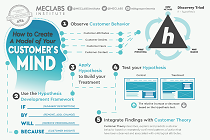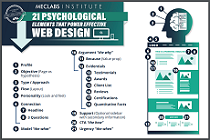
|
SUMMARY:
This year is the 20th anniversary of MarketingSherpa. Founded in the early days of the internet and registered on October 5th, 1999 — back when Y2K was a far bigger threat than the A.I Apocalypse — MarketingSherpa has been reporting on email marketing since its inception. Here are some of our most popular articles from the past two decades. Since we’ve used total traffic as a proxy for popularity, the list skews to older articles, giving us a chance to take a look back through email’s history. What’s most surprising is how much hasn’t changed. There is still very good advice in all of these articles. (As seen in the MarketingSherpa Email Marketing newsletter. Click to get a free subscription to the latest research and case studies from MarketingSherpa.) |

High-impact Email Writing Part I: Useful Lists of Short Words, Strong Verbs, and Blah Words (August 13, 2003)
Email technology has changed (somewhat) but the primary communication medium hasn’t — words.
This article provided straightforward advice on tighter phrasing, stronger verbs, and words you should eliminate altogether.
Marketing Research Chart: Do different age groups prefer different channels? (March 10, 2015)
Almost two decades in, email remained a more popular communication medium with companies than newer, more novel channels.
We surveyed 2,057 adults about their communication preferences with companies and, spoiler alert, email was popular across all generations.
Market to Lawyers: 5 Specific Tactics (Hint: Text-only Email) (February 22, 2006)
Even with the advent of HTML email, words were popular in email marketing. This tutorial for marketing to lawyers discusses the power of text-only emails, partly because of the popularity of a pre-iPhone mobile email reader — the BlackBerry.
How to Improve Your Customer Service Email Responses: 5 Solutions to Common Problems (February 5, 2003)
Email is much more than a promo blast to a giant list. The most intimate way to forge a connection with customers is through customer service email. After all, customer service is just one-to-one marketing.
Marketing Research Chart: How do customers want to communicate? (February 3, 2015)
The aggregate data of American consumers’ communication preference. Email dominates.
Alarming Research Results: Average Email Open Time is 15-20 Seconds -- Recommendations for Emailers (January 13, 2005)
People were impatient with their email in 2005 — and are probably only more impatient today as they triage email on a smartphone while simultaneously watching the ballgame on TV, talking to a friend and ordering food at a restaurant.
10 Best Practices to Increase Email Response Rates for Fundraising (January 2, 2008)
Makes a great point. The newsletter is part of fundraising (just like all the content you provide) even when it doesn’t have a direct purchase ask. Email builds understanding and instills trust, ultimately leading to a better response when you do make an ask.
Then the article goes on to provide direct advice for that donation request email.
Check Your Email Reputation to Improve Deliverability with Easy, No-Cost Tools (February 11, 2009)
Most of the popular articles so far have focused on the creative side of email marketing. But it’s essential to get the technical side right as well — or else your subscribers will never see your email creative.
Email Marketing Chart: How subject line length affects open rates (May 19, 2015)
Subject line length and average read rate data based on 9,313,885 emails from more than 3,000 retail senders.
Email Research Chart: How often customers want to receive promotional emails (February 10, 2015)
Email frequency is a perennial marketing challenge. This chart shows how frequently customers want to receive promotional emails, based on research with 2,057 adults. The biggest data point that might raise your eyebrow — how few customers said “never.”
Email Marketing Chart: Personalized subject lines (June 16, 2015)
Just like bell bottoms went out of style and then came back as flare pants, email personalization has come back into style. When you think about it, early email was all personalized since it was a one-to-one send. Technology made mass emails possible, but it also quickly brought back the ability to personalize.
Personalized subject lines increased open rates, but the effect varied by industry, as shown in the data in this chart.
Related Resources
MECLABS Institute Email Messaging on-demand certification course (from MarketingSherpa’s parent research organization)
Bundle of 6 checklists to optimize your email marketing
Email Marketing Reports Bundle
Get Better Business Results With a Skillfully Applied Customer-first Marketing Strategy

The customer-first approach of MarketingSherpa’s agency services can help you build the most effective strategy to serve customers and improve results, and then implement it across every customer touchpoint.
Get More Info >MECLABS AI

Get headlines, value prop, competitive analysis, and more.
Use the AI for FREE (for now) >Marketer Vs Machine

Marketer Vs Machine: We need to train the marketer to train the machine.
Watch Now >Live, Interactive Event

Join Flint McGlaughlin for Design Your Offer on May 22nd at 1 pm ET. You’ll learn proven strategies that drive real business results.
Get Your Scholarship >Free Marketing Course

Become a Marketer-Philosopher: Create and optimize high-converting webpages (with this free online marketing course)
See Course >Project and Ideas Pitch Template

A free template to help you win approval for your proposed projects and campaigns
Get the Template >Six Quick CTA checklists

These CTA checklists are specifically designed for your team — something practical to hold up against your CTAs to help the time-pressed marketer quickly consider the customer psychology of your “asks” and how you can improve them.
Get the Checklists >Infographic: How to Create a Model of Your Customer’s Mind

You need a repeatable methodology focused on building your organization’s customer wisdom throughout your campaigns and websites. This infographic can get you started.
Get the Infographic >Infographic: 21 Psychological Elements that Power Effective Web Design

To build an effective page from scratch, you need to begin with the psychology of your customer. This infographic can get you started.
Get the Infographic >Receive the latest case studies and data on email, lead gen, and social media along with MarketingSherpa updates and promotions.